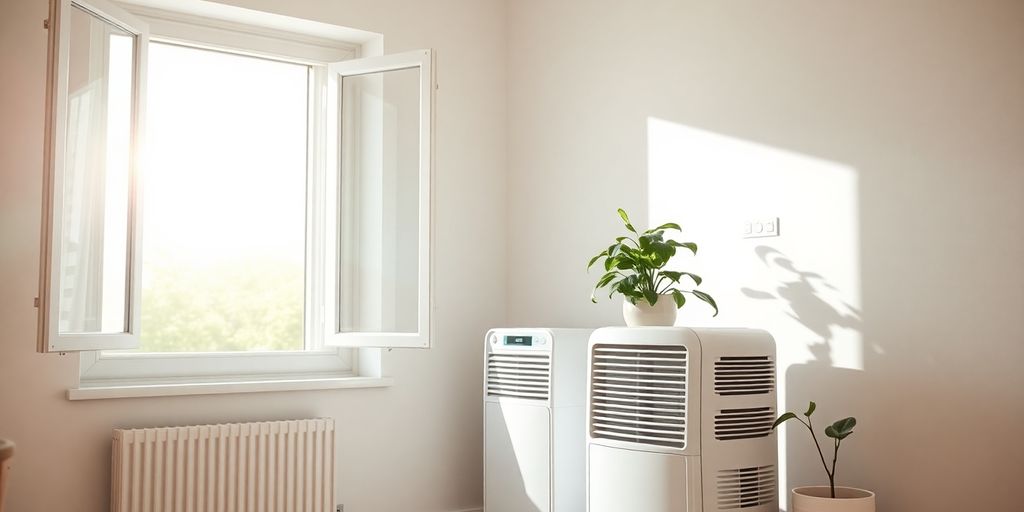June is here, and with it comes warmer weather and often, more humidity. That’s great for summer fun, but it also creates perfect conditions for mold to grow in your home. Nobody wants that musty smell or the health issues that can come with mold. Luckily, there are some pretty straightforward things you can do right now to keep your place mold-free. We’ll go over some easy strategies to help you prevent mold this month so your home stays fresh and healthy.
Key Takeaways
-
Keep an eye on your home’s humidity levels; too much moisture is mold’s best friend.
-
Regularly check for and fix any water leaks, big or small, to stop mold before it starts.
-
If you suspect hidden mold or have had water damage, getting professional mold inspection services might be a smart move.
Controlling Indoor Humidity Levels
Humidity, especially in June, can be a real problem when it comes to mold growth. It’s not just about feeling sticky and uncomfortable; high humidity creates the perfect environment for mold to thrive. We need to keep an eye on the moisture levels in our homes to prevent unwanted fungal guests. It’s more than just opening a window now and then; it’s about actively managing the air we breathe inside.
Utilizing Dehumidifiers Effectively
Dehumidifiers are our best friends during humid months. They pull excess moisture from the air, making it less hospitable for mold. But just plugging one in isn’t enough. We need to think about placement. Put them in areas prone to dampness, like basements, bathrooms, and laundry rooms. Also, keep an eye on the water collection tank and empty it regularly to keep the dehumidifier running efficiently. Don’t forget to clean the filter every so often, too. A dirty filter makes the unit work harder and less effectively. Here’s a quick checklist:
-
Place dehumidifiers in damp areas.
-
Empty water tanks regularly.
-
Clean filters monthly.
-
Check humidity levels with a hygrometer.
Ensuring Proper Ventilation
Ventilation is another key piece of the puzzle. Stale, humid air needs to go, and fresh, dry air needs to come in. Open windows when the weather allows, especially after showering or cooking. Use exhaust fans in bathrooms and kitchens to vent moisture directly outside. Make sure these fans are actually working and not just making noise. If you have crawl spaces or attics, ensure they are properly ventilated as well. Sometimes, adding vents can make a big difference. It’s all about creating airflow to prevent moisture buildup.
Proper ventilation is not just about opening windows; it’s about creating a continuous cycle of air exchange to prevent moisture from settling and encouraging mold growth. This includes using fans, vents, and even adjusting your home’s layout to promote better airflow.
Proactive Home Maintenance for Mold Prevention
We all know that preventing mold is way easier than dealing with it after it’s already taken hold. So, let’s talk about some simple home maintenance tasks that can seriously cut down on the chances of mold growth, especially during these humid June days. It’s really about staying ahead of potential problems.
Addressing Leaks Promptly
Leaks are like an open invitation for mold. Seriously, even a tiny drip can create a big problem over time. We need to be vigilant about checking for leaks around our homes.
-
Inspect under sinks regularly. It’s easy to forget about those dark corners.
-
Check around toilets and bathtubs for any signs of water damage.
-
After a heavy rain, take a walk around the house and look for water stains on ceilings or walls.
If we find a leak, it’s important to fix it immediately. Don’t put it off. A quick repair can save us a lot of headaches (and money) down the road.
Regular Gutter and Downspout Cleaning
Gutter cleaning? Yeah, it’s nobody’s favorite chore. But trust us, it’s super important for mold prevention. Clogged gutters can cause water to back up and overflow, which can then seep into our homes. Not good.
-
We should aim to clean our gutters at least twice a year – once in the spring and again in the fall. But in June, after all those spring showers, it’s a good idea to give them an extra check.
-
Make sure the downspouts are directing water away from the foundation. If they’re not, we might need to add extensions.
-
While we’re up there, check for any damage to the gutters themselves. Cracks or holes can also lead to water problems.
Keeping our gutters clean is a simple way to protect our homes from water damage. It’s a task that’s easy to overlook, but it can make a big difference in preventing mold growth.
When to Consider Professional Mold Inspection Services

Sometimes, despite our best efforts, mold issues can be tricky to handle on our own. Knowing when to call in the pros is key to maintaining a healthy home environment. It’s not always obvious when you need a professional, but there are definitely some telltale signs.
Identifying Hidden Mold Growth
Mold isn’t always visible. It can hide behind walls, under floors, or in ceilings. If you notice a persistent musty odor but can’t find the source, it’s a good idea to get a professional mold inspection. They have the tools and experience to detect mold in places we might not think to look. We’re talking about using moisture meters, thermal imaging, and even taking air samples to check for mold spores. These tests can reveal hidden infestations that are causing the smell. It’s better to be safe than sorry, especially if you or your family members have allergies or respiratory issues.
Post-Flood Assessment and Remediation
Flooding is a major red flag for mold growth. Even if you clean up the water quickly, mold can start growing within 24-48 hours in damp conditions. After a flood, we should always consider a professional mold inspection, even if we don’t see any visible mold.
Here’s why:
-
Professionals can assess the extent of the water damage and identify areas that are at high risk for mold growth.
-
They have specialized equipment to dry out affected areas quickly and thoroughly, preventing mold from taking hold.
-
They can safely remove and dispose of mold-contaminated materials, following proper protocols to prevent further spread.
Dealing with mold after a flood can be overwhelming. Professionals can guide us through the remediation process, ensuring that our home is safe and healthy again. They can also provide documentation for insurance claims, which can be a huge help during a stressful time.
Ignoring mold after a flood can lead to bigger problems down the road, so it’s best to address it promptly and professionally.
Wrapping Things Up
So, there you have it. Keeping mold out of your home this June doesn’t have to be a huge headache. It’s really about staying on top of things, you know? Just a few simple steps, like checking for leaks and making sure air can move around, can make a big difference. Nobody wants to deal with mold, so a little bit of effort now can save you a lot of trouble later. Give these tips a try, and enjoy a mold-free summer!
Frequently Asked Questions
What’s the best humidity level for my home to stop mold?
It’s a good idea to keep your home’s humidity between 30% and 50%. You can check this with a hygrometer, which is a simple tool that measures moisture in the air.
How often should I clean my gutters?
You should clean your gutters and downspouts at least twice a year, usually in the spring and fall. But if you have a lot of trees around your house, you might need to do it more often.
When should I call someone to check for mold?
If you see mold growing, smell a musty odor, or recently had a water leak or flood, it’s a good idea to call a professional. They can find hidden mold and help you get rid of it safely.
